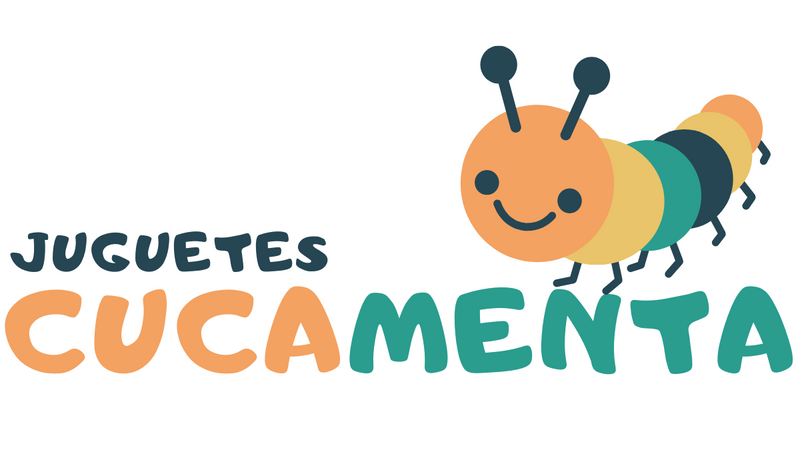These small and magical objects have the power to calm any baby almost instantly: today we talk about the pacifier, the benefits it brings to the little ones and the techniques to remove it properly.
As its name indicates, the term comes from sucking, or what is the same, moistening or extracting juice from something with the tongue and mouth. Its piece is shaped like a nipple so that the baby can suck it in a similar way to when he is breastfed by his mother.
There are pacifiers made of different materials and shapes - such as plastic, rubber, latex or silicone - although the model recommended by the Spanish Association of Pediatric Dentistry is the physiological or flat-shaped nipple. Unlike the drop-shaped one, the bottom of this pacifier is flat, allowing the tongue to be placed in a higher position. In addition, it is symmetrical, equally valid in any position, even if the baby turns the pacifier upside down.
Best material for the pacifier
Both latex and silicone are highly recommended options for pacifier material , although each of these materials has its own advantages.
Silicone does not absorb odors or flavors and is more durable and resistant, but it has less flexibility and is less recommended for when teeth have already emerged. Latex is 100% natural, more flexible, elastic and soft, but it has to be renewed every less time, because it can be altered when sterilized and it absorbs odors more easily.
With these features in mind, you can choose the pacifier that best suits you.
What advantages does the pacifier have?

The Mayo Clinic in the United States lists the main benefits of a pacifier for your baby: it calms their anxiety when they are upset, offers a temporary distraction during a blood test or injection, helps them sleep, allows them to feel satisfied between feedings and relieves discomfort caused by pressure changes when traveling by plane. It also minimizes the bad habit of thumb sucking and helps reduce sudden death syndrome.
Other benefits supported by science associate the pacifier with an analgesic effect and with the stimulation of non-nutritive sucking in preterm and full-term children.
Of course, not all are advantages: the child can become very dependent on this object and suffer crying attacks when it is dropped, which can increase the risk of suffering from middle ear infections - although they are the lowest from birth to 6 months. age, when the risk of sudden infant death syndrome is at its highest and the baby is more intentional about using a pacifier - and lastly, it can cause long-term dental problems.
Up to what age is a pacifier recommended?
From 12 months to 2 or 3 years is the recommended age to stop using a pacifier. The Spanish Society of Orthodontics and Dentofacial Orthopedics (SEDO) highlights that the pacifier does not cause oral malformations as long as it is removed before the age of two. It is advisable to remove it before early childhood education begins.
Some of the dental problems that continuing to use a pacifier can cause are open bite, crossbite, bone deformities and malformation of the temporomandibular joint.
It is important not to force the baby to use the pacifier and let him set his pace of use, not always offer it to him every time he cries - the ideal is between feedings or after breastfeeding -, always keep it clean - you should boil it or wash it in the dishwasher until that the baby is six months old -, keep it in a safe place, use the appropriate size and do not put sweet substances in it.
How to remove the pacifier
Some children need help to give up the pacifier , which has become a key element to calm down, fall asleep or calm anxiety.
The Breastfeeding Committee of the Spanish Pediatric Association recommends limiting its use until one year of age , which includes the ages of maximum risk for SIDS and those in which the infant has the greatest need to suck.
A good time to start giving up the pacifier is when he starts to crawl and take his first steps, as he will have a great interest in exploring and developing new skills, which can make it easier for him to give up oral pleasure.
These are some tips from pediatricians, dentists and specialists to help your child wean your little one off his pacifier :
- Prepare the boy or girl for that conversation, reminding him or her that he or she is older.
- Reward him for the goals he achieves, always with positive reinforcement and good words.
- Instead of taking drastic measures or taking it away suddenly, negotiate the use of the pacifier with the child and praise him when he does it well. Reduce its use to the essential minimum.
- Change the use of the pacifier for other elements such as sippy cups, which also promote hand-eye coordination.
- You can replace the pacifier with another attachment object , such as a doudou or a stuffed animal.
- Read stories that address the topic of giving up the pacifier, or invent personalized stories in which the child grows up and no longer needs it, so a magical being or superhero can take it away.
- If the child or baby is very fond of their pacifier, explain to them what is going to happen with their pacifier. For example, the Three Wise Men may take him to other younger children because he has already grown up.
- Choose the ideal moment, which should be calm and routine, not a moment of trauma, change or mourning.
- Do not compare him with others: each child is unique and has his own rhythm.
- Be affectionate, clear and patient with the child.


0 comments